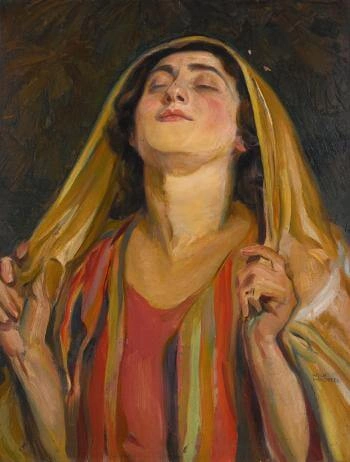337. I. Saving faith is in the Lord God the Saviour Jesus Christ.
Saving faith is in God as Saviour, because He is God and man, and He is in the Father and the Father is in Him, so that they are one. Those therefore who approach Him, at the same time approach the Father, that is, the one and only God, and saving faith is in no other. We are to believe or have faith in the Son of God, the Redeemer and Saviour, who was conceived of Jehovah and born of the Virgin Mary, and was named Jesus Christ. This is evident from His own often-repeated commands, and later from those of the Apostles. The following passages show clearly that He commanded faith in Himself:
Jesus said, This is the will of the Father who sent Me, that everyone who sees the Son and believes in Him should have everlasting life, and I should raise him up on the last day,John 6:40.
He who believes in the Son has everlasting life; but he who does not believe in the Son will not see life, but the wrath of God rests upon him, John 3:36.
So that everyone who believes in the Son may not perish, but have everlasting life. For God so loved the world that He gave His only-begotten Son, so that everyone who believes in Him should not perish, but have everlasting life, John 3:15-16.
Jesus said, I am the resurrection and life. He who believes in Me shall not ever die, John 11:25-26.
In truth I say to you, he who believes in me has everlasting life. I am the bread of life, John 6:47-48.
I am the bread of life. He who comes to me will not be hungry, and he who believes in Me will never be thirsty, John 6:35.
Jesus cried out saying, If anyone is thirsty, let him come to me and drink. If anyone believes in me, as the Scripture says, streams of living water will flow from his belly, John 7:37-38.
They said to Jesus, What shall we do to perform God's work? Jesus answered, This is God's work, to believe in Him whom the Father has sent, John 6:28-29.
So long as you have the light, believe in the light, so that you may be sons of light, John 12:36.
He who believes in the Son of God is not judged; but he who does not believe has already been judged, because he has not believed in the name of the only-begotten Son of God, John 3:18.
These things have been written so that you may believe that Jesus is the Son of God, and so that by believing you may have life in His name, John 20:31.
If you do not believe that I am, you will die in your sins, John 8:24.
Jesus said, When the Comforter, the Spirit of truth, comes, He will try the world concerning sin, righteousness and judgment; concerning sin, for not believing in Me, John 16:8-9.







